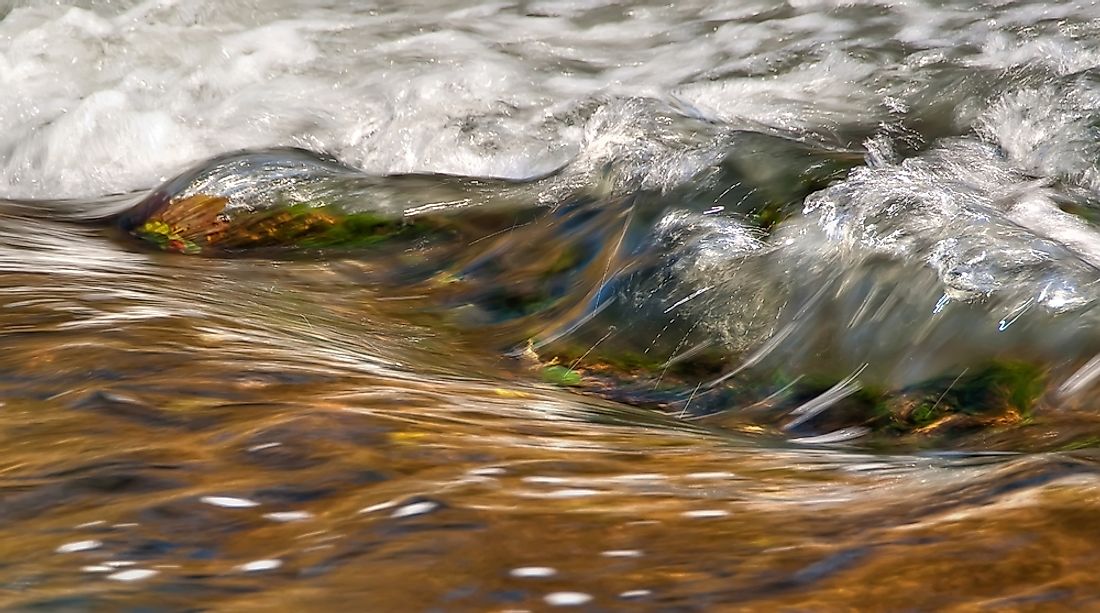What Is A Riffle?

Rivers form a variety of features that vary in size and functions as they flow. Such features include riffles. A riffle is a shallow landform (elevated river bed) on a stream where water runs fast and in an agitated manner due to sediment deposits below the place. Mostly, riffles form in the shallow straight waters between loops. In most cases, a pool forms immediately after a riffle thus forming a sequence of riffle-pool features on a given length of a stream. Just like other river features, riffles have their advantages and disadvantages to aquatic life within them.
Formation of Riffles
As a stream flows, it carries rough sediments downstream which it deposits in shallower areas. Since the streams carry the rock and gravel sediments over a short distance, they tend to be rough and different from alluvium. As the stream continues to deposit the particles, they cause a disturbance in the flow thus making water flowing above them flow faster and in a more agitated manner than upstream and downstream. As the water flows faster over a riffle, it forms a pool at some distance after the riffle which may become bigger over time. Eventually, the stream develops a series of riffles and pools. Once in a while, heavy stream flooding may alter the riffle-pool sequence but it takes a short period to redevelop.
Characteristics of Riffles
In many circumstances, riffles are features of cold water streams and vary in depth, usually between one inch to approximately three feet. During the development process of features in a stream, riffles normally develop long before the streams form visible meanders, and continues to develop even after the meanders form. Some sediments may be exposed to the water surface and some may be submerged near the surface. Because the water deposits sediments on these features, the discharge from the riffles usually has fewer sediments. Riffles have a narrow aquatic plant and animal life and in some cases, plant life is limited to small algae and diatoms. Within these features, only fish with a capability of clinging to rocks may exist for short periods of time. Such fish and other organisms include mayflies, stoneflies, caddisflies, Strout, net-winged midges, sculpins, and dace. Stoneflies and caddisflies get good cobbly gravel within riffles to hide.
Importance of Riffles To Aquatic Life
The rocky bottoms of riffles provide some species of fish like trout with good spaces to hide away from predators. For these species, riffles may also provide food deposits hidden under the rocks, as well as shelter. Daters, sculpins, and crayfish hide beneath sediments at night enabling predators like Strout to easily find and feed on them. Because of the turbulent nature of riffles, plenty of air gets mixed up with water providing aquatic animals (fish and insects) with the much-needed dissolved oxygen. This fact is the reason different species of fish like idling near riffles especially in hot weather. Additionally, some fish and insect species reproduce or grow within riffles. Currents caused by riffles dislodge nymphs from the rock into a natural biological drift thrust distributing them further downstream to grow and reproduce. The riffle-pool sequence provides a diverse habitat for aquatic life.
Problems Riffles Bring To Aquatic Life
Too many sediments in riffles may cover fish eggs on gravels consequently causing the eggs to smother and only a few to survive. Sediments may also cloud the water and reduce fish visibility in addition to clogging their gills. With poor visibility, fish species are susceptible to predators.











